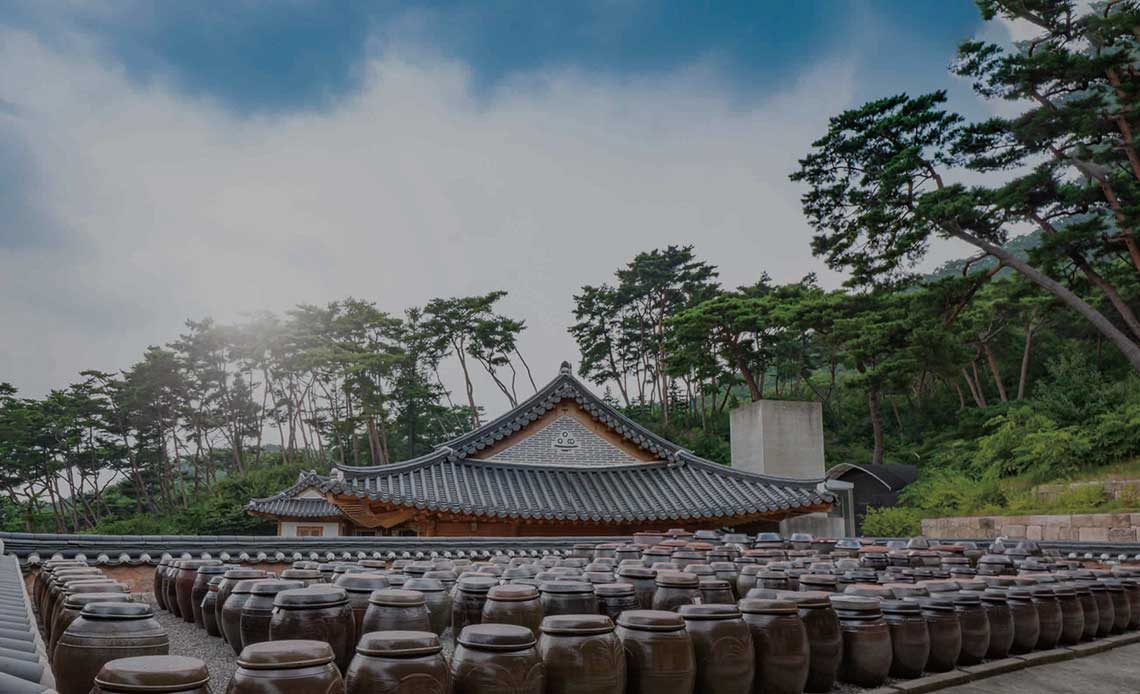
Feature
Traditional Korean Sauces Derived from Nature
By Text by Chung Hae-kyung, Professor Emeritus, Hoseo University Photos by Shutter Stock, Clipartkorea
Megaliths from the Bronze Age
Korea and Its Sauces
Fermented soybeans have held an important position in the diet of East Asians for thousands of years. Recipes based on fermented soybeans have been passed down within families through the generations, giving birth to a colorful range of variations. These traditional soybean-based sauces transmitted among Koreans are known as jang. The definitive examples include ganjang (soy sauce), doenjang (soybean paste), and gochujang (chili paste). Traditional Korean sauces all start with meju, which is made by pounding cooked soybeans and shaping them into blocks that are then fermented. The development of traditional Korean sauces likely began around the time when meju blocks were first produced, which is estimated as the third century CE or before.

Traditional Korean sauces are made from meju blocks.

From the left: gochujang (chili paste), doenjang (soybean paste), and ganjang (soy sauce)
To make traditional Korean sauces, meju blocks are soaked in brine and fermented with microorganisms. During this process, the proteins in soybeans are broken down into amino acids that exude a distinctive flavor described by the Korean adjective gusuhada. This fermentation also allows for extended storage. Confined to the mountainous environment of the Korean Peninsula, Koreans of the past filled their tables with wild vegetables collected from the mountains. Fermented soybean sauces added savory flavors to these vegetable dishes. The lack of protein in this vegetable-rich diet was supplemented by the soybeans in the sauces. Jang sauces also contain Vitamin B12, an essential nutrient that is not present in soybeans until they are fermented. The traditional Korean diet revolves around vegetable dishes and fermented foods, a cuisine epitomized by jang sauces.
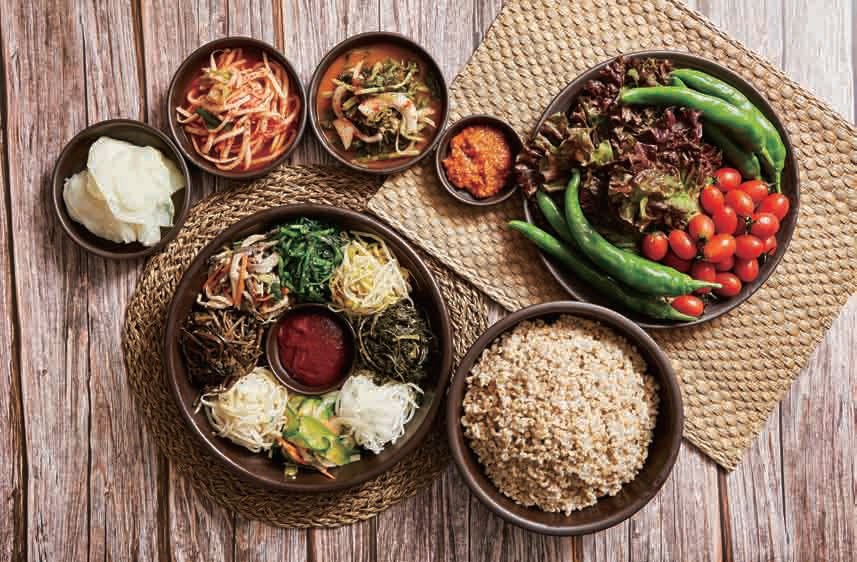
Jang sauces are the primary factor in the flavor of many meals, including the popular Korean dish bibimbap (“mixed rice”).
Completed by Care and Time
Some of the soybeans harvested in autumn are stashed away until winter and then cooked to create meju blocks. After fermentation, the meju blocks are used to produce jang. The jang sauces are brewed when it is cold so they can be gradually exposed to higher temperatures with the arrival of spring and summer. This process of fermentation progressing from low to high temperatures brings out all the different elements in the ingredients. At first they compete with each other, but with time a harmonious taste is generated. Jang sauces require attentive care during their fermentation. In the daytime, the jar containing a jang sauce should have its lid removed to allow sunrays to destroy unwanted microorganisms. The lid is put back on at night to protect the contents from moisture. The surface of a jang jar should be cleaned regularly to keep any harmful substances at bay. The final ingredient for making traditional Korean sauces is attention and time.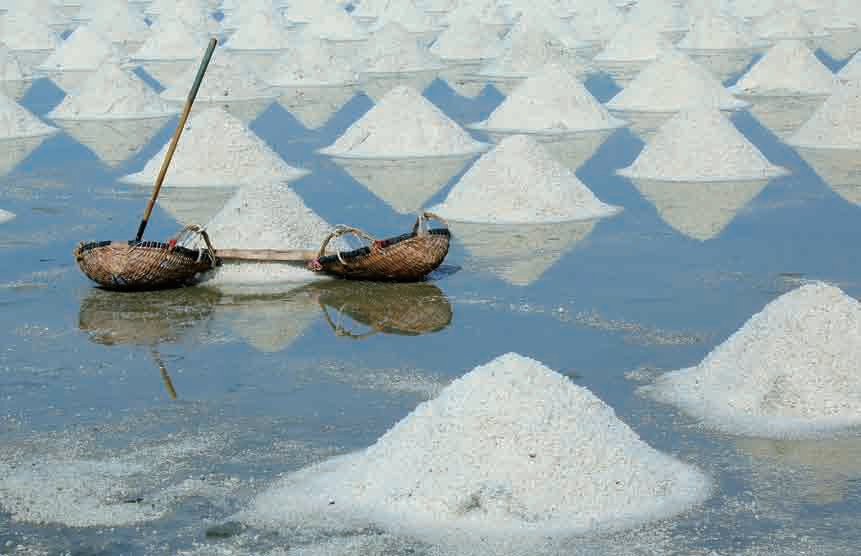
Korean sea salt is used for making jang.
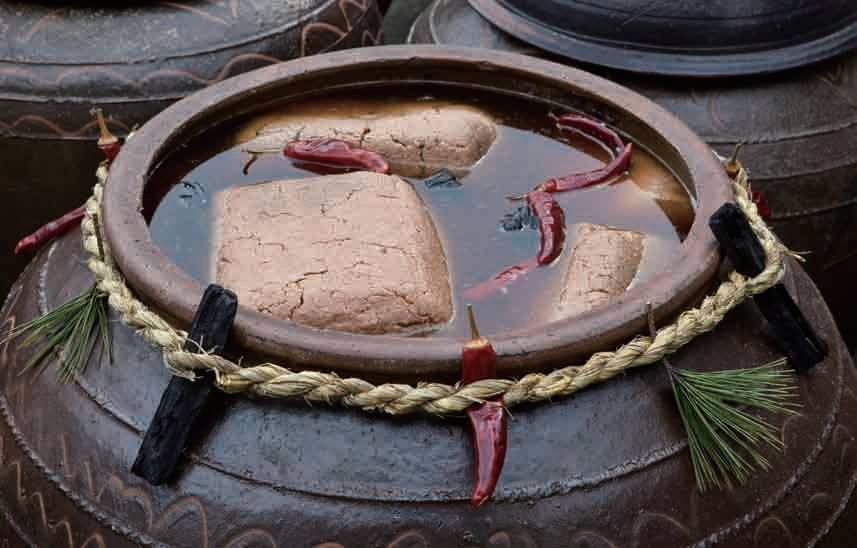
Meju blocks are placed in an onggi pot with water and salt and stored for fermentation
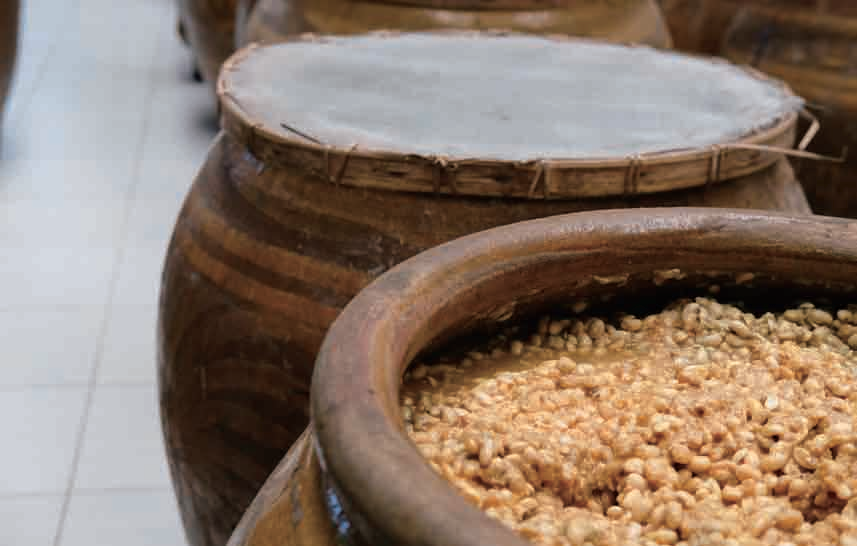
Jang sauces are completed through attentive care over a long period of time.